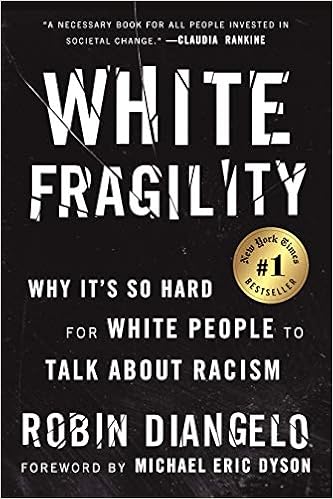Tame the Classroom posted Top 5 Things White Teachers Can Do To Dismantle Racism about a week ago in response to the recent killings of George Floyd, Breonna Taylor, and Ahmaud Aubery which have sparked outrage and protests across the nation and around the world.
This post comes at a crucial time when many white teachers like myself feel uncertain, desperate to stand up and help, but unsure of how to.
After reading the post and reflecting on it, I challenge teachers to share Tame the Classroom's post, and reflect honestly on how much you are doing as a white person in a position of power in society.
So, white teachers, which of these do you already do? Which are you working on? Which are missing in your practice?
I'll go first:
ALREADY DO
I'm happy to say that I have no problem whatsoever speaking my mind on issues of injustice. I know there are many teachers who are afraid to appear too political. I myself used to avoid telling students my personal thoughts on politics or who I voted for, because I was warned I could have an undue influence and get in trouble for it. I toed that line for several years, but after Donald Trump was elected and proved to be as bad for people of color and for public education as we feared, I stopped caring about that line. Because our country has crossed a far greater line in the hatred and bigotry we allow. One day I may suffer professionally for speaking my mind, but frankly at this time in our country's history, I don't give a damn.
WORKING ON
I already infuse current events into my curriculum but it's not consistent. It's one of those things I keep intending to do a better job with and dropping when other responsibilities get in the way. This coming year I'm thinking of making several current event articles available for students to choose one of interest and discuss.
I also really need to learn more about black history and POC history so I can integrate it as well. As an English teacher I can include this by highlighting amazing black authors and artists and reading and writing about black history. I need to find better resources for this to determine what POC consider to be crucial to know or learn about. This will be integrated into study of critical literacies, especially with my older students.
3. Provide classroom resources that include representation.
I reject the canon as being the only things worth reading in school, but until this past year I didn't think much about representation in my class library. My focus was entirely on the genres or topics my students would be interested in, not if they could see themselves in them.
All of my teacher supply money will go towards correcting that this year. If you haven't already done so, I highly recommend checking out the recent issues of School Library Journal which they've maid available to the public during quarantine. In particular their December 2019 issue features the article "Black is Beautiful," and their Winter 2019 has a great list of books in "Towards a More Diverse Collection." March 2020 has an article "Social Justice" with books that address inequality and injustice that are worth checking out as well.
4. Seek to understand your black students, black families, black teacher colleagues and their cultures.
I'd like to believe that I don't factor in race when I interact with others, but I recognize that this is likely a rose-tinted view of my world. I may harbor hidden assumptions even I am not aware of, and there are also times when educators should be aware or race in order to identify issues of inequality.
I definitely get to know my black students and love talking to them about our cultural differences. Sometimes I tell them a story and they laugh and tell me "that's some white people stuff." I could be offended by this, or avoid the conversation, but I find it fascinating to ask them what they mean and learn about the differences in our life experiences.
I recognize that I could go further than knowing my students well as individuals. The truth is that, as a high school teacher, the idea of getting to know every family is daunting and it often falls to the wayside. Who knows how much my students and I are missing out on because of that?
I'M NOT SURE
This one I really struggle with responding to, and I plan to reach out to some of my black colleagues to discuss it.
The Tame the Classroom post suggests offering genuine friendship to black colleagues and talking to them about social justice issues. I believe I have those genuine friendships, but being completely honest my best friends at work are all white. At this moment I find myself reflecting on why that is. Is it because the vast majority of the teachers in my department are white? Or that the black teachers in my department teach different subject areas and have different planning periods?
Or do I not extend the same effort of friendship to black teachers as I do to white ones? I genuinely hope that's not the case but I won't know until I examine myself and talk to others.
I hope that in this post I have been honest and not offensive. I wanted to use this space to be bare and acknowledge my weaknesses and what I still need to learn, while also sharing an amazing resource that I believe my fellow teachers should all utilize.
So once again, please go read Top 5 Things White Teachers Can Do To Dismantle Racism and, when your done, take the time to truly reflect on where you are, where you're going, and how you'll get there.













